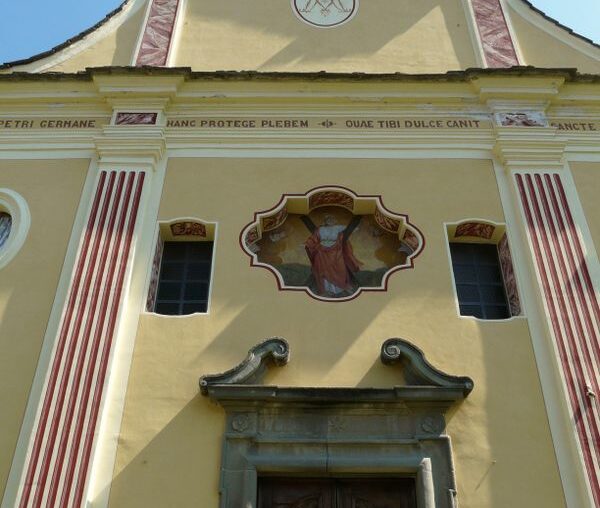Along the road leading from Acqui Terme in the province of Alessandria to Sassello in the province of Savona, a detour into the surrounding countryside leads to Mioglia. It’s a place where time seems to have stopped that welcomes you with the silence of the centuries and is magic, in its wild simplicity.
Of the many churches and chapels in this small municipality, the Church of Saint Andrew the Apostle (Chiesa di Sant’Andrea Apostolo) is the most evocative. Its historical origins are obscure and not well-documented. It looks like the church was built in the Middle Ages, however, he current building dates back to the first half of the 17th century.
Inside the church you’ll find beautiful frescoes by Pietro Ivaldi from Toleto, known as “Il Muto” (“the Mute”). But it is the church’s portal, which dates back to the year 1701, that serves as the focal point of the building. On its lintel, you can read an inscription, in Latin: “Terribilis est locus site,” which means “This place commands respect” (literally: “This place is frightful”). This formula comes from the Bible, specifically from the Book of Genesis chapter 28; verse 17, where Jacob dreamed of a ladder that linked the earth and sky. When he woke up, he carved a stone slab with this inscription: “Terribilis est locus iste! Haec domus Dei est et porta coeli,” “This place commands respect! This is the house of God and the door of heaven.”
The first sentence appears in other Christian churches, mainly in Europe. In the case of the Church of Saint Andrew the Apostle in Mioglia, it is accompanied by a heptagram, or a seven-pointed star, which represents the connection of the human world with the transcendental sphere and the seven days of creation.
With its natural, centuries-old isolation and its ascetic landscape, Mioglia is a mystical place. It’s no surprise, therefore, that the Church of Saint Andrew the Apostle was considered by locals and visitors alike a place that could have represented a transition point between earth and heaven—a “gate” to get closer to the mysteries of creation.

